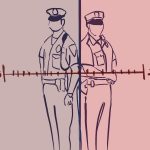Students are no strangers to danger on the streets of Boston. In fact, cars might be more afraid of us than we are of them. We dart out onto the street with vehicles barreling toward us. We ignore all road signs in favor of what’s convenient for us. We’re fearless.
But it seems the rest of the city isn’t so bold. A Boston City Council committee meeting heard a proposal from councilors Ed Flynn and Frank Baker to lower the city’s speed limit to 20 mph Tuesday, and voices were overwhelmingly in favor.
On Commonwealth Avenue, students think they’re invincible. Some drivers recognize that students who are late to class will be darting out across the street when it’s not their turn, but some don’t seem to care how close they come in contact with a human body. The city still sees far too many deadly accidents a year, and reducing the speed limit can’t be the only answer.
Massachusetts state law prohibits red light and speed cameras — tools that have been successful in other cities to hold drivers accountable to traffic rules.
“Vision Zero” is an initiative by city officials designed to reduce the number of motor vehicle crashes in Boston by 2030. Installing cameras that give drivers a sense of accountability to follow the speed limit, even without officers around, should be an essential part of that plan.
The safety of Boston’s walkers and bikers, who don’t have metal armor to protect themselves in the event of a collision, should be a priority. But changing the number on a road sign by 5 mph isn’t enough to convince people to actually follow the law. This won’t change the driving habits of people who have lived in this city for years. And in downtown Boston, where streets are generally congested, cars don’t have the capability of speeding anyway.
The City should be pursuing safety in other ways. Cars don’t care about speed limits, especially on Commonwealth Avenue. What’s more important is making a change in how pedestrians act around cars.
Pedestrians are largely to blame for this problem. We don’t take traffic lights seriously, and we assume cars will move out of the way for us. East Coasters take their habit of jaywalking as a source of pride, which isn’t something that will be easy to change.
To prioritize the safety of vulnerable commuters, the city can work on increasing visibility around crosswalks and increasing the number of protected bike lanes that prevent drivers from infiltrating on bikers’ space.
Boston University students regularly ride bikes to get to where we need to be, and we regularly witness bikers narrowly avoiding accidents with vehicles. We hear drivers and bikers yelling obscenities at each other while they compete for road space.
The need for protections for bikers should be more apparent than ever after a Boston University graduate student was fatally hit by a dump truck last week while biking in Cambridge. Biker and driver were both waiting to make the same right turn, and the truck overpowered the bike.
If the City wants to increase biking and walking as methods of transportation, it needs to prove that infrastructure is in place that will not only ask but require drivers to abide by traffic laws.
Expecting drivers to follow arbitrary numbers on road signs has not proven effective to date, and reducing the speed limit by such a small number is irrelevant to city drivers who already don’t care about what that number is. What the City needs more than anything is a change in pedestrian mentality, and if that’s not possible, we need more reliable means of holding cars accountable.














